As we get less space, more people, and worse weather, it’s going to take some crazy farming solutions to feed everyone. These are a few of the ways forward-looking farmers are planning on doing it.
Food itself is changing. In the future, we’ll eat new items that we never before envisioned biting into. Scientists are constantly innovating new packaging and new sources for food. And the movement to sustainable, organic, and hyper-local food is prompting a complete re-envisioning of what a farm is. What follows are a few examples of what the post-factory-farm future holds, from simplest to most out there.
1. Rooftop Urban Farms
In places like Portland and the Bay Area, backyards are regularly transformed into crop-yielding mini-farms. In the concrete jungle of New York, hobbyists and actual urban farmers often take to rooftops. That was the case with the 6,000-square-foot Eagle Street Rooftop Farm in the north Brooklyn neighbourhood of Greenpoint. The soil-based vegetable farm first began plantings in 2009 and to date it’s offered up spinach, kale, tomatoes, peas, peppers, and even squash. The garden currently serves about 10 local restaurants and other businesses in north Brooklyn and is also a community-supported agriculture hub.
2. Urban Greenhouses
Gotham Greens is a 15,000-square-foot rooftop farm that is situated on the top of a former bowling alley a few blocks southeast of Eagle Street. Using hydroponics, the farms grows its plants in water, as opposed to soil. The farmers are able to circulate nutrient-rich water through the gutters that the plants sit in and control the temperature to ensure they’ll have a winning harvest of lettuce, arugula, basil, and other crops. The farm, which yielded about 100 tons of produce in 2011, gets half of its power from a solar array.
3. Modular Urban Farms
There are more than a few urban farms in Brooklyn. Here’s one on a rooftop on the east side of Midtown Manhattan that has one advantage over its counterparts from that other borough: The 15,000-square-foot Riverpark Farm is totally modular. The key is more than 7,000 recycled milk crates. So, instead of one garden, it’s essentially several small ones with crops that can be moved if they need more sunlight. Currently, the self-proclaimed “most urban farm” is growing 180 different types of plants and supplies vegetables to the adjacent Riverpark restaurant.
4. Personal Urban Farms
Some people don’t have access to a rooftop or a yard that’s conducive to urban farming. You can still have an urban farm, provided you have space (about the size of a parking space) and money ($70,000) for an Agri-Cube by the Japanese outfit Daiwa House Industry. The pod has room for 10,000 fruits and veggies to be grown hydroponically at a cost of about 45 cents per piece of produce. There’s adjustable lighting for each plant, controllable temperature, and a drainage system for the water.
5. Vertical Farms
Here on Earth, the world’s population pushing full steam ahead toward well over 9 billion by 2050, food is at a premium. One idea that’s been dreamt up to combat the potential food shortage is vertical farms, essentially taking concepts from land, streamlining them and making them more efficient, and moving them inside, where they can be meticulously controlled. A good example is The Plant, a former meatpacking plant on Chicago’s South Side, which was started in 2010. Its goal is to be off-the-grid and a zero-waste facility and it will have hydroponic crops, a fish farm, and several aquaponic farms.
6. Desert Shrimp Farms
The world’s most popular seafood item is white shrimp, and a company called Blue Oasis Pure Shrimp is proving that it can grow the critters anywhere - even in the desert outside of Las Vegas. The company has developed a closed-loop indoor farm full of artificial ponds kept at 80 degrees Fahrenheit to grow half a million pounds of shrimp per year. The company says its process, which takes 120 days to grow restaurant quality shrimp and recycles 100% of its water, is a more sustainable alternative to wild-caught shrimp and traditional shrimp farms, which when constructed can endanger local ecosystems.
7. Floating Fish Farms
One of the concerns with fish farms is that seafood is being raised out of its natural environment. The Aquapod, developed as part of Kampachi Farm’s Velella Project, allows baby fish to mature in the cozy confines of a 22-foot diameter soccer ball-shaped bubble surrounded by brass mesh that keeps barnacles from, well, barnacling onto the pod. A pilot project (watch video here) off the coast of Hawaii’s big island involves 2,000 Kampachi fish that are eating soybean-enriched diets that are more sustainable.
8. Space Greenhouses
Remember that moon base that GOP presidential candidate Newt Gingrich promised would be built by 2020 if he won the presidency? Well, if that were to happen (even without a President Gingrich), the people living at the base would need food. Enter scientists at University of Arizona’s Controlled Environment Agriculture Centre who have been experimenting with growing crops hydroponically for a lunar or Martian greenhouse. The greenhouses would be housed in tubes buried under the moon’s surface to protect from radiation in that environment. Water for plant growth could be recycled from base residents’ urine and carbon dioxide could come from the astronauts’ breathing.
Related Posts:
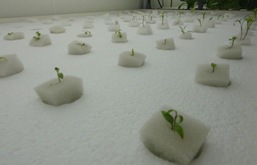

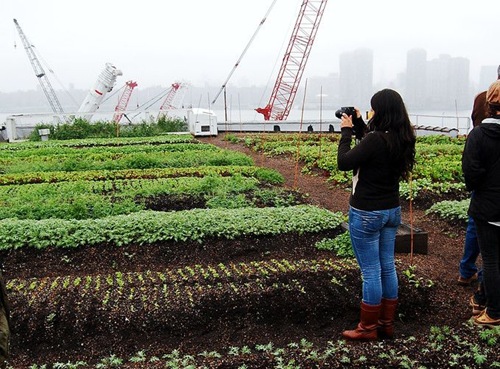
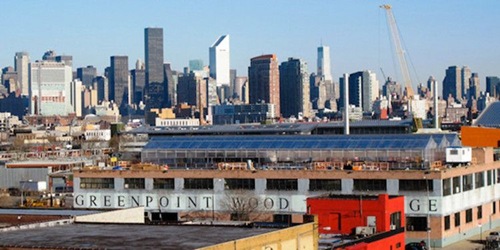
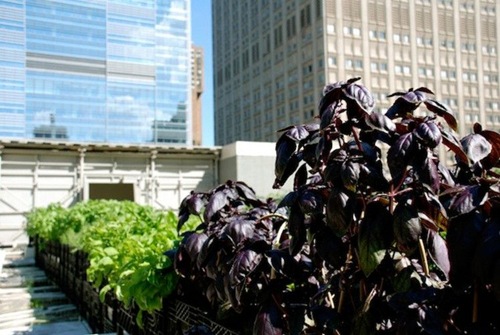
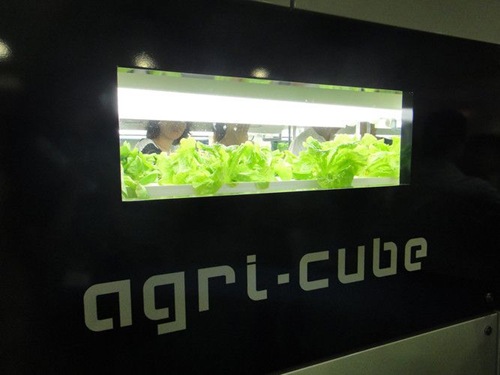


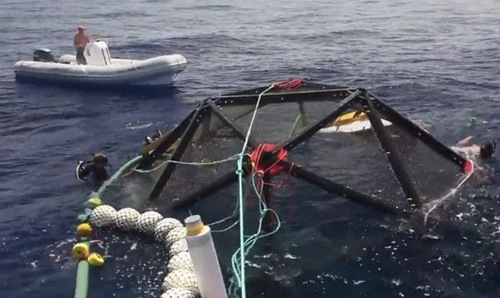

No comments:
Post a Comment
Please adhere to proper blog etiquette when posting your comments. This blog owner will exercise his absolution discretion in allowing or rejecting any comments that are deemed seditious, defamatory, libelous, racist, vulgar, insulting, and other remarks that exhibit similar characteristics. If you insist on using anonymous comments, please write your name or other IDs at the end of your message.